Social media strategy good practices is a short list of principles that can make your firm stand out when empowering customer and employee experience. It’s part of a talk I gave today to a large multidisciplinary team. Their venerable institution plans to use social media strategy to get the ducks in a row without too much squawking. The most exciting aspect of social media strategy is that there’s so much room for improvement: while your peers and competitors are trying to “engage” with finely crafted-yet-impersonal content, you can power past them using experiential social media, which focuses on scalable interaction.
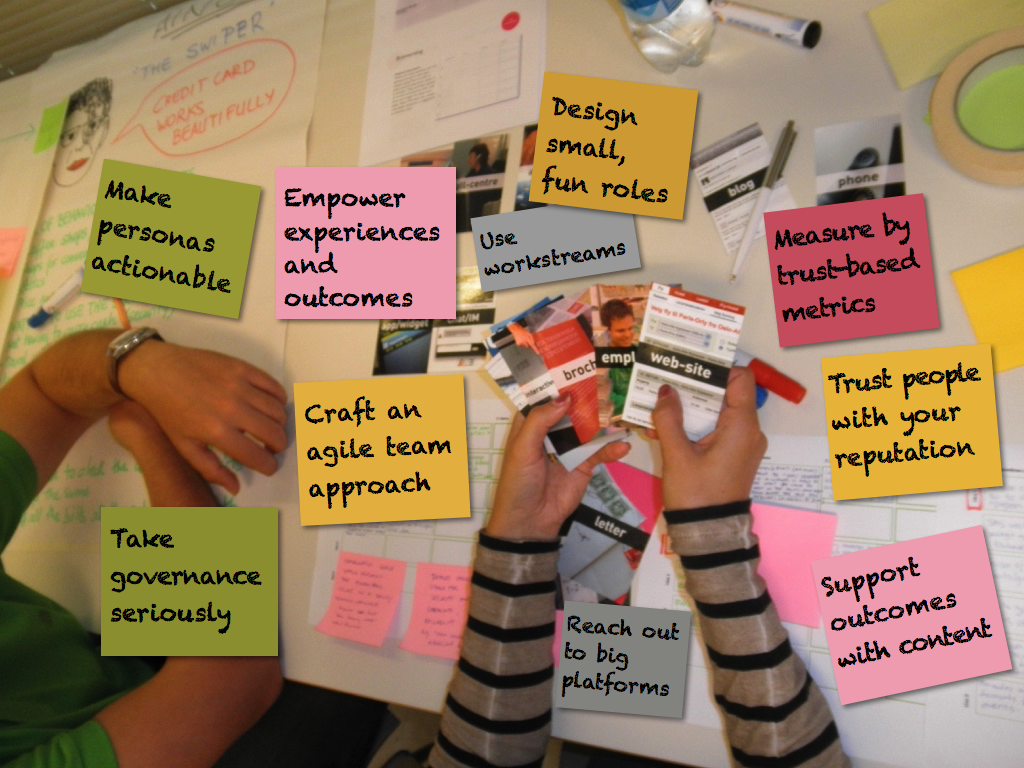
Here are the cliff notes to the good practices part of our discussion:
[…]
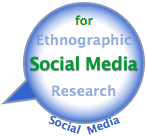 Ethnographic research for social media initiatives shows how ethnography can change the rules of social media programs in marketing, customer service, product development, recruiting and others. Ethnographic research enables teams to understand the people who are most important to your firm so they can relate to them at a completely different level. Moreover, interacting in digital public activates the network effect and the annuity effect, so it’s very scalable. Since your teams interact in digital public, where a far larger group of like people observes the interactions, they influence a large group of people and build relationships with them. People start trusting your firm, preferring your firm, and doing more business with you. See the Trust Business Chain Reaction and infographic for how it monetizes. Ethnographic research for social media initiatives shows how ethnography can change the rules of social media programs in marketing, customer service, product development, recruiting and others. Ethnographic research enables teams to understand the people who are most important to your firm so they can relate to them at a completely different level. Moreover, interacting in digital public activates the network effect and the annuity effect, so it’s very scalable. Since your teams interact in digital public, where a far larger group of like people observes the interactions, they influence a large group of people and build relationships with them. People start trusting your firm, preferring your firm, and doing more business with you. See the Trust Business Chain Reaction and infographic for how it monetizes.
Ethnographic research for social media initiatives is a game-changer for customer experience and digital transformation programs in multiple phases. It’s faster, less costly, and scalable. It provides an unprecedented combination of qualitative and quantitative research.
[…]
 The connected car and customer experience reveals a new opportunity for carmakers to dial into real customer behavior and desires around connected cars and autonomous cars. The Connected car and the autonomous car are powerful services that will help transform how people move around, and they are emerging during an era of unprecedented volatility in markets. I’ll wager that there’s never been a better or more challenging time to be a carmaker because opportunities and threats have never been higher. I’ve been fortunate to meet product managers and engineers who are pioneering connected and autonomous car services. I’ve also been meeting leaders in the Internet of Things (smart devices), of which the connected car is a part. The connected car and customer experience reveals a new opportunity for carmakers to dial into real customer behavior and desires around connected cars and autonomous cars. The Connected car and the autonomous car are powerful services that will help transform how people move around, and they are emerging during an era of unprecedented volatility in markets. I’ll wager that there’s never been a better or more challenging time to be a carmaker because opportunities and threats have never been higher. I’ve been fortunate to meet product managers and engineers who are pioneering connected and autonomous car services. I’ve also been meeting leaders in the Internet of Things (smart devices), of which the connected car is a part.
My crystal ball says that the connected car is a bet-the-brand proposition for carmakers because it directly addresses competing on customer experience, the most disruptive trend of all. As I detailed in The Social Channel, we have moved from a product/service-based economy toward an experience economy. Even IT analyst Gartner has proclaimed that customer experience is the final battleground for firms. […]
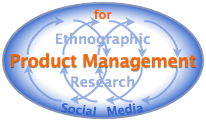 Ethnographic research for product management shows how to apply ethnographic research of social media to managing the life cycle of products and services. Ethnographic research of social media can revolutionize product management because it’s a very efficient way to study people’s behavior and motivations in each part of the product life cycle. Unlike traditional product and ethnographic research methods, which are relatively slow, costly and qualitative, ethnographic research of social media combines qualitative richness with quantitative analysis. It’s faster and less costly, too. Ethnographic research for product management shows how to apply ethnographic research of social media to managing the life cycle of products and services. Ethnographic research of social media can revolutionize product management because it’s a very efficient way to study people’s behavior and motivations in each part of the product life cycle. Unlike traditional product and ethnographic research methods, which are relatively slow, costly and qualitative, ethnographic research of social media combines qualitative richness with quantitative analysis. It’s faster and less costly, too.
This post outlines the product management use case of ethnographic research of social media. For more on ethnographic research, see its executive summary.
[…]
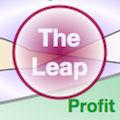 How Trusting Customers Drives Profit reveals how firms unwittingly broadcast that they don’t trust their customers, how that weakens profit, and how firms can take the leap. It’s a simple revolutionary idea that’s born from nine years of studying behavior while practicing experiential social media and social business. How Trusting Customers Drives Profit reveals how firms unwittingly broadcast that they don’t trust their customers, how that weakens profit, and how firms can take the leap. It’s a simple revolutionary idea that’s born from nine years of studying behavior while practicing experiential social media and social business.
Analysts, consultants and professors increasingly say that customer experience is the last bastion of competitiveness, and an increasing portion of total experience occurs in digital public. This presents firms with an unprecedented opportunity: interacting with people in digital public can create trust at scale and drive profit from revenue and cost levers.
[…]
 Reflections on Trust: The Power of Trusting People to Be True to Themselves delves into how trust works in personal and business situations Reflections on Trust: The Power of Trusting People to Be True to Themselves delves into how trust works in personal and business situations
Many people are talking about trust in business these days. I am, too, because it’s the core of my business as well as my personal life. It just occurred to me that there are often some accidental gotchas within many trust discussions I read, and I’ll explore them in case that’s useful to you. First, I’ll delve into trust a little before sharing some insights on how you can make it actionable in your personal, career, and business relationships.
[…]
How Free Things Are Disrupting Businesses + Radical Innovation + Guide to Free Business Models
Book Review: Free/Chris Anderson
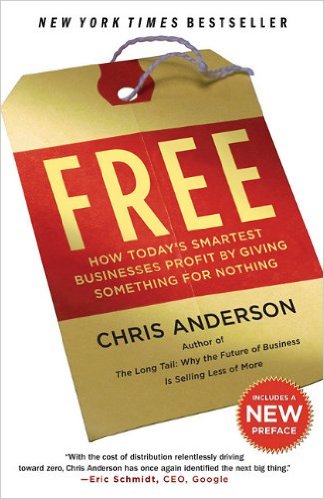 Free is an indispensable introduction to the disruption of “a product for a price,” one of the Industrial Economy’s key constructs. It is rich with examples of many of the pricing innovations and business models with which you’re probably familiar but haven’t thought about in depth. Many of its examples have to do with digital products, which are inherently disruptive because their distribution cost is close to zero, and they can displace legacy analog products. Free is an indispensable introduction to the disruption of “a product for a price,” one of the Industrial Economy’s key constructs. It is rich with examples of many of the pricing innovations and business models with which you’re probably familiar but haven’t thought about in depth. Many of its examples have to do with digital products, which are inherently disruptive because their distribution cost is close to zero, and they can displace legacy analog products.
Free is important and useful for two reasons beyond pricing and business model innovation: it contains a good dollop of behavioral economics with regard to pricing, and it gives numerous examples for thinking beyond the two-party market model that dominated the Industrial Economy, buyer and seller. As Anderson repeatedly shows, in digitally networked markets spawned by the Internet, firms put themselves at significant risk when they don’t adopt a networked ecosystem mindset. For example:
When something becomes free, […]
 The short guide to forum outreach reveals how experiential social media teams can tap forums’ unique opportunity to engage users, using a three-stage model. Forums are vital to relationship building with people with specific interests. They are consistently the most people-centric platform type according to CSRA’s research in such diverse industries as healthcare, consumer products, financial services, government, and nonprofits. As such, although they are very human and social, forums are distinct from social media, which often enables social actions oriented to content sharing and short exchanges. The short guide to forum outreach reveals how experiential social media teams can tap forums’ unique opportunity to engage users, using a three-stage model. Forums are vital to relationship building with people with specific interests. They are consistently the most people-centric platform type according to CSRA’s research in such diverse industries as healthcare, consumer products, financial services, government, and nonprofits. As such, although they are very human and social, forums are distinct from social media, which often enables social actions oriented to content sharing and short exchanges.
In some ways, forums are the polar opposite of social media because their DNA is threaded discussions, which enable long conversations among many members. Even more exciting, the most passionate members are often members of several forums that are relevant to your stakeholders and workstreams.
[…]
 This short guide to blog infrastructure outlines some of the basics for how to choose a platform and make best use of basic blog features, so your blog will encourage interactions with your high-priority readers. Most brands and people use blogs for content marketing, but it competes for pocket change and leaves the bills on the table. Here you’ll learn how to organize your blog, so it engages readers more deeply by relating to them in distinctive ways. Before delving into some bits and bytes of blog software and features, I’ll outline a new way to approach engagement that changes the rules, which are themselves a kind of infrastructure. This short guide to blog infrastructure outlines some of the basics for how to choose a platform and make best use of basic blog features, so your blog will encourage interactions with your high-priority readers. Most brands and people use blogs for content marketing, but it competes for pocket change and leaves the bills on the table. Here you’ll learn how to organize your blog, so it engages readers more deeply by relating to them in distinctive ways. Before delving into some bits and bytes of blog software and features, I’ll outline a new way to approach engagement that changes the rules, which are themselves a kind of infrastructure.
[…]
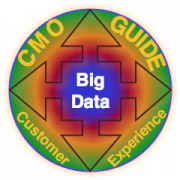 The CMO Guide to Big Data and Analytics shows how CMOs can use exploding digital social and transaction data from websites, enterprise systems, smartphones, tablets, cars, appliances, devices and the Internet of Things in surprising ways that have more to do with customer insight than technology. The CMO Guide to Big Data and Analytics shows how CMOs can use exploding digital social and transaction data from websites, enterprise systems, smartphones, tablets, cars, appliances, devices and the Internet of Things in surprising ways that have more to do with customer insight than technology.
The digital social world and modern cloud-based technologies have reinvented the practice of “analytics” so that it’s faster, cheaper and more open. I’ll paint a broad picture of this new world before referring you to other resources where you can drill down.
Big data is usually discussed from a big-ticket I.T. perspective, but new technology enables marketers to practice “lean data,” which starts small and proves/iterates hypotheses before scaling with large investments. The biggest barriers are knowledge and imagination, not technology.
Big data elevates opportunities for marketers because they can know their customers and serve them better based on their actions, not only what they say. Conversely, big data is increasing customers’ expectations for being treated as individuals, not “consumers.”
[…]
|
|


 Ethnographic research for social media initiatives shows how ethnography can change the rules of social media programs in marketing, customer service, product development, recruiting and others. Ethnographic research enables teams to understand the people who are most important to your firm so they can relate to them at a completely different level. Moreover, interacting in digital public activates the network effect and the annuity effect, so it’s very scalable. Since your teams interact in digital public, where a far larger group of like people observes the interactions, they influence a large group of people and build relationships with them. People start trusting your firm, preferring your firm, and doing more business with you. See the Trust Business Chain Reaction and infographic for how it monetizes.
Ethnographic research for social media initiatives shows how ethnography can change the rules of social media programs in marketing, customer service, product development, recruiting and others. Ethnographic research enables teams to understand the people who are most important to your firm so they can relate to them at a completely different level. Moreover, interacting in digital public activates the network effect and the annuity effect, so it’s very scalable. Since your teams interact in digital public, where a far larger group of like people observes the interactions, they influence a large group of people and build relationships with them. People start trusting your firm, preferring your firm, and doing more business with you. See the Trust Business Chain Reaction and infographic for how it monetizes. The connected car and customer experience reveals a new opportunity for carmakers to dial into real customer behavior and desires around connected cars and autonomous cars. The Connected car and the autonomous car are powerful services that will help transform how people move around, and they are emerging during an era of unprecedented volatility in markets. I’ll wager that there’s never been a better or more challenging time to be a carmaker because opportunities and threats have never been higher. I’ve been fortunate to meet product managers and engineers who are pioneering connected and autonomous car services. I’ve also been meeting leaders in the Internet of Things (smart devices), of which the connected car is a part.
The connected car and customer experience reveals a new opportunity for carmakers to dial into real customer behavior and desires around connected cars and autonomous cars. The Connected car and the autonomous car are powerful services that will help transform how people move around, and they are emerging during an era of unprecedented volatility in markets. I’ll wager that there’s never been a better or more challenging time to be a carmaker because opportunities and threats have never been higher. I’ve been fortunate to meet product managers and engineers who are pioneering connected and autonomous car services. I’ve also been meeting leaders in the Internet of Things (smart devices), of which the connected car is a part. Ethnographic research for product management shows how to apply ethnographic research of social media to managing the life cycle of products and services. Ethnographic research of social media can revolutionize product management because it’s a very efficient way to study people’s behavior and motivations in each part of the product life cycle. Unlike traditional product and ethnographic research methods, which are relatively slow, costly and qualitative, ethnographic research of social media combines qualitative richness with quantitative analysis. It’s faster and less costly, too.
Ethnographic research for product management shows how to apply ethnographic research of social media to managing the life cycle of products and services. Ethnographic research of social media can revolutionize product management because it’s a very efficient way to study people’s behavior and motivations in each part of the product life cycle. Unlike traditional product and ethnographic research methods, which are relatively slow, costly and qualitative, ethnographic research of social media combines qualitative richness with quantitative analysis. It’s faster and less costly, too. Reflections on Trust: The Power of Trusting People to Be True to Themselves delves into how trust works in personal and business situations
Reflections on Trust: The Power of Trusting People to Be True to Themselves delves into how trust works in personal and business situations Free is an indispensable introduction to the disruption of “a product for a price,” one of the Industrial Economy’s key constructs. It is rich with examples of many of the pricing innovations and business models with which you’re probably familiar but haven’t thought about in depth. Many of its examples have to do with digital products, which are inherently disruptive because their distribution cost is close to zero, and they can displace legacy analog products.
Free is an indispensable introduction to the disruption of “a product for a price,” one of the Industrial Economy’s key constructs. It is rich with examples of many of the pricing innovations and business models with which you’re probably familiar but haven’t thought about in depth. Many of its examples have to do with digital products, which are inherently disruptive because their distribution cost is close to zero, and they can displace legacy analog products. The short guide to forum outreach reveals how experiential social media teams can tap forums’ unique opportunity to engage users, using a three-stage model. Forums are vital to relationship building with people with specific interests. They are consistently the most people-centric platform type according to CSRA’s research in such diverse industries as healthcare, consumer products, financial services, government, and nonprofits. As such, although they are very human and social, forums are distinct from social media, which often enables social actions oriented to content sharing and short exchanges.
The short guide to forum outreach reveals how experiential social media teams can tap forums’ unique opportunity to engage users, using a three-stage model. Forums are vital to relationship building with people with specific interests. They are consistently the most people-centric platform type according to CSRA’s research in such diverse industries as healthcare, consumer products, financial services, government, and nonprofits. As such, although they are very human and social, forums are distinct from social media, which often enables social actions oriented to content sharing and short exchanges. This short guide to blog infrastructure outlines some of the basics for how to choose a platform and make best use of basic blog features, so your blog will encourage interactions with your high-priority readers. Most brands and people use blogs for content marketing, but it competes for pocket change and leaves the bills on the table. Here you’ll learn how to organize your blog, so it engages readers more deeply by relating to them in distinctive ways. Before delving into some bits and bytes of blog software and features, I’ll outline a new way to approach engagement that changes the rules, which are themselves a kind of infrastructure.
This short guide to blog infrastructure outlines some of the basics for how to choose a platform and make best use of basic blog features, so your blog will encourage interactions with your high-priority readers. Most brands and people use blogs for content marketing, but it competes for pocket change and leaves the bills on the table. Here you’ll learn how to organize your blog, so it engages readers more deeply by relating to them in distinctive ways. Before delving into some bits and bytes of blog software and features, I’ll outline a new way to approach engagement that changes the rules, which are themselves a kind of infrastructure. The CMO Guide to Big Data and Analytics shows how CMOs can use exploding digital social and transaction data from websites, enterprise systems, smartphones, tablets, cars, appliances, devices and the Internet of Things in surprising ways that have more to do with customer insight than technology.
The CMO Guide to Big Data and Analytics shows how CMOs can use exploding digital social and transaction data from websites, enterprise systems, smartphones, tablets, cars, appliances, devices and the Internet of Things in surprising ways that have more to do with customer insight than technology.